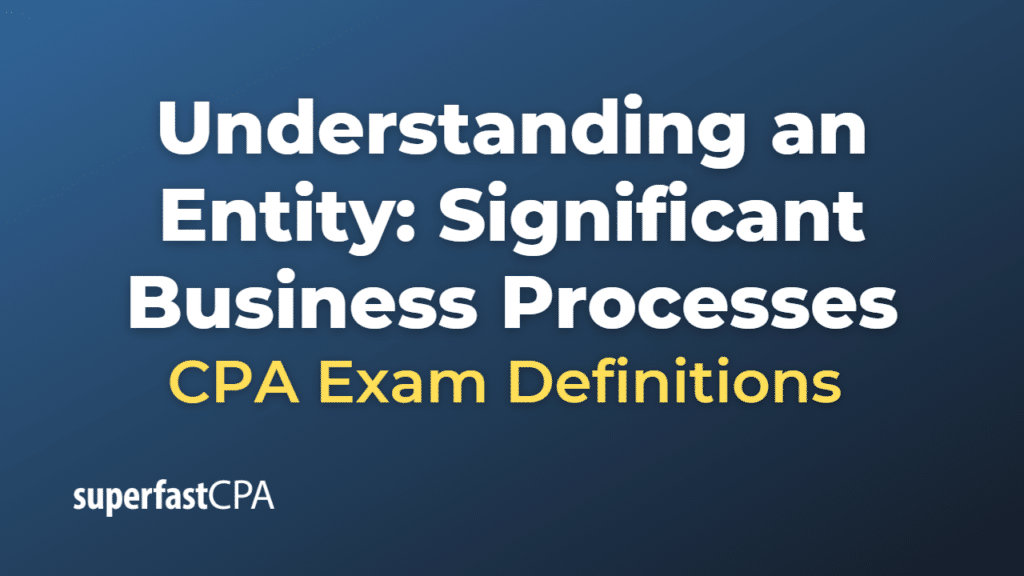Understanding an Entity: Significant Business Processes
An auditor identifies and documents significant business processes that directly or indirectly impact an entity’s financial statements to better understand the organization’s operations and assess the risks of material misstatements. The following steps outline a systematic approach to achieve this objective:
- Understand the entity’s business and industry: Gain an understanding of the entity’s business, industry, and the external environment, including its business model, products, services, and key market drivers. This information helps to identify the significant business processes and the associated risks.
- Review financial statements and accounting policies: Examine the entity’s financial statements, significant account balances, and disclosures, as well as its accounting policies and practices. This helps to identify the areas that have a direct impact on the financial statements.
- Identify significant business processes: Identify the key business processes related to revenue, expenses, assets, liabilities, and equity that directly or indirectly impact the financial statements. Examples of significant business processes may include revenue recognition, procurement, inventory management, payroll, and financial reporting.
- Assess the complexity and materiality: Evaluate the complexity of each business process, considering factors such as the volume of transactions, the use of estimates and judgments, and the involvement of third parties. Assess the materiality of each process, considering both quantitative and qualitative factors, to determine its potential impact on the financial statements.
- Evaluate the control environment: Consider the entity’s overall control environment, including its risk assessment, control activities, information and communication systems, and monitoring activities, as they relate to the significant business processes.
- Perform walkthroughs and interviews: Conduct walkthroughs of the significant business processes, observing the activities and control procedures in place. Interview key personnel involved in these processes to gain insights into their roles, responsibilities, and the design and operation of the controls.
- Document significant business processes: Create clear and comprehensive documentation of the significant business processes identified, including process flowcharts or narratives that detail the process steps, roles and responsibilities, and related control activities. This documentation should also highlight the risks associated with each process and how the entity has addressed these risks through its control activities.
- Assess the risks of material misstatements: Based on the understanding of significant business processes and the control environment, identify and assess the risks of material misstatements at the assertion level for each relevant financial statement item. This information will be used to plan further audit procedures, including tests of controls and substantive procedures.
By following these steps, auditors can systematically identify and document significant business processes that directly or indirectly impact an entity’s financial statements, providing a solid foundation for the planning and execution of the audit.












